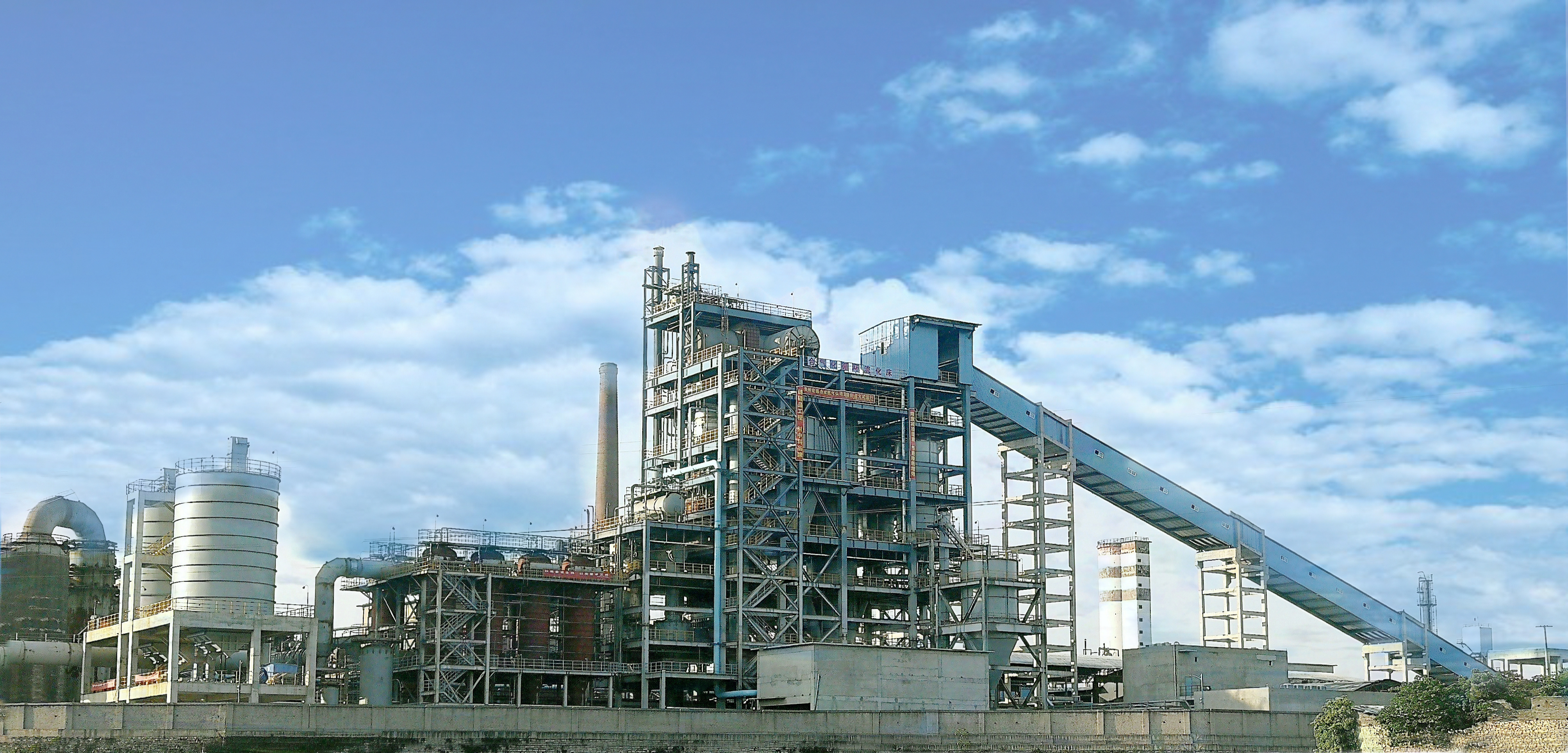At 8:18 AM on May 18, 2020, the core equipment of Phase I of Guizhou Hongsheng Chemical's 300,000 tons/year Ammonia Synthesis Gasification Reform Project (hereinafter referred to as the "Hongsheng Project")—a 60,000 Nm³/h Circulating Fluidized Bed (CFB) gasifier—successfully ignited on its first attempt, entering the hot commissioning and operation phase. This project was undertaken by ZHGAS.

The Hongsheng Project is a demonstration initiative applying atmospheric pressure circulating fluidized bed coal gasification technology to the preparation of synthesis ammonia feedstock gas. It is also a CFB gasification unit that uses anthracite coal as its raw material. Previously, Guizhou Hongsheng Chemical Co., Ltd. utilized intermittent fixed-bed coal gasifiers for raw gas production, which were characterized by high energy consumption, severe pollution, and low efficiency.
ZHGAS, taking into account the local anthracite coal's characteristics such as low reactivity and high ash content, upgraded the gasification section by applying the Circulating Fluidized Bed Coal Gasification Technology (CGAS Technology) developed by the Institute of Engineering Thermophysics, Chinese Academy of Sciences. The project construction is divided into two phases. After Phase I is put into operation, one 60,000 Nm³/h CFB gasifier will replace the production capacity of the original twenty-four intermittent fixed-bed coal gasifiers. This will significantly enhance the automation level of Hongsheng Chemical's coal gasification process, eliminate issues such as the generation of hazardous wastes like tar and phenol-cyanide wastewater from fixed-bed gasifiers, and achieve significant energy savings and cost reductions. It is estimated to save Hongsheng Chemical over 66 million yuan annually.
Since its arrival on site, the project department overcame challenges such as a tight schedule, high requirements, humid construction environment, and high temperatures with heavy rainfall, successfully completing tasks including low-temperature baking, process piping system acceptance, and DCS system testing by the end of 2019 as scheduled. Following the holiday period and affected by the COVID-19 pandemic, the project department resumed work on April 8, 2020. In accordance with company and local government requirements, strict inspections and scientific prevention and control measures were implemented. The team actively liaised with all parties, striving to mitigate the adverse effects of the pandemic and effectively organized the arrival and work of installation units on site. With the efficient cooperation and coordinated efforts of all participating units, power was officially supplied on April 13, and single-unit testing work proceeded in an orderly fashion.
During the commissioning period, ZHGAS organized a series of training sessions for the owner's operators, meticulously explaining system processes, common issues encountered during equipment debugging, and their solutions, thereby enabling the owner's operators to independently operate and troubleshoot issues. After a month of diligent efforts, all commissioning, training, and snagging work has been completed.
Hot commissioning is a crucial phase before the project's official operation. Prior to this, the project department had repeatedly organized hot commissioning progress meetings with the Design Department, Debugging and After-Sales Service Center, and the owner. These meetings involved careful deployment and coordinated arrangements, emphasizing inter-departmental cooperation in preparing for inspections of system piping, equipment, power supply, fuel supply, temperature monitoring points, and fire safety facilities. Simultaneously, relevant personnel were organized to undergo safety technical briefings, study emergency response plans, and conduct emergency drills, all to ensure the smooth and safe progression of this phase of work.
Next, the project department will comprehensively test the unit's operating conditions in its hot state. They will meticulously record and organize the gasifier's operating data to accumulate information for subsequent economic calculations. Simultaneously, they will identify the most efficient and economical operating points, ensuring the unit's safe, highly efficient, and economic operation.
The successful ignition of the Hongsheng Project marks ZHGAS's initial breakthrough in the field of ammonia synthesis. Taking this project as a new starting point, it will accelerate the industrial application of CGAS technology in the ammonia synthesis sector. By leveraging the technology's advantages, such as strong coal adaptability, low energy consumption costs, energy efficiency, environmental protection, and clean, high efficiency, it will provide efficient, clean, and environmentally friendly solutions for ammonia synthesis and coal chemical enterprises.